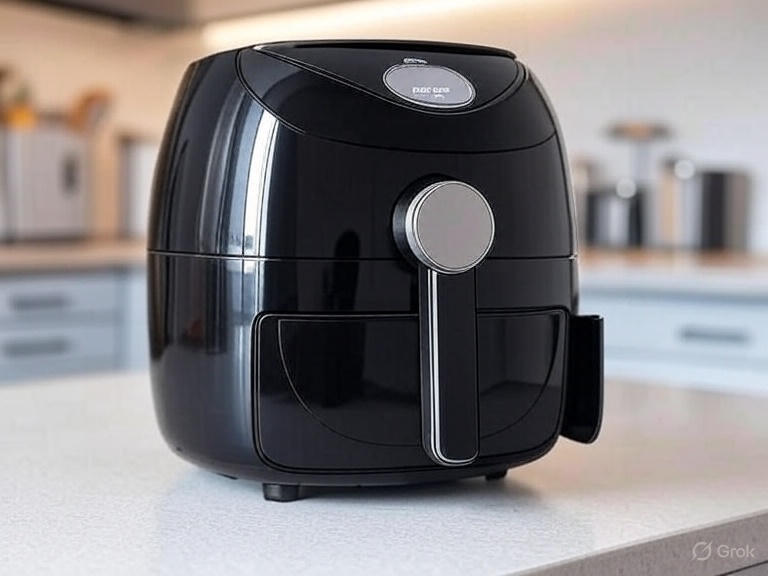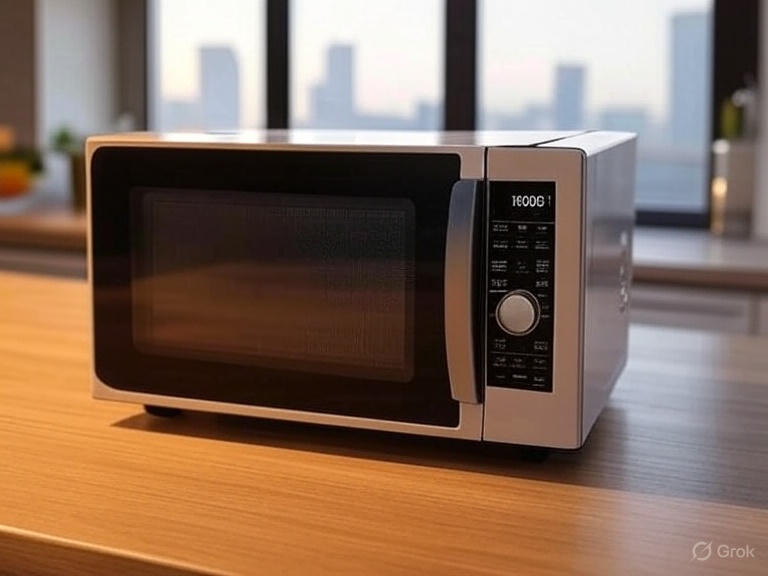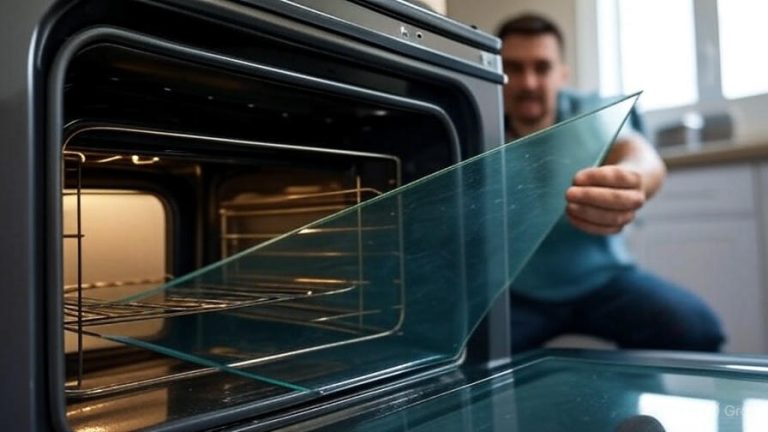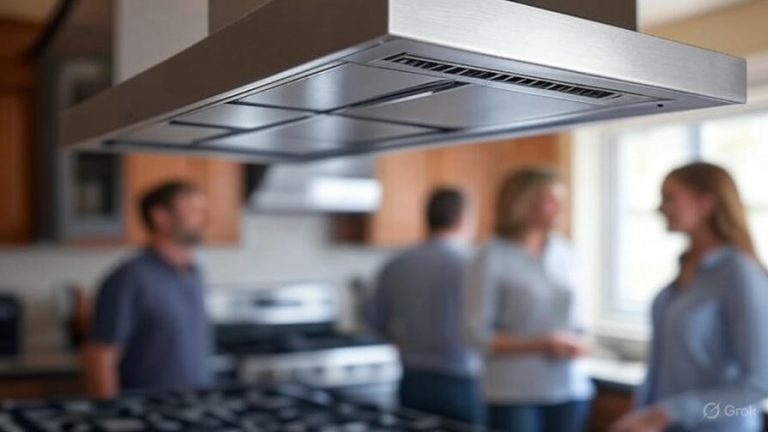How Are Air Fryers Toxic?
Air fryers have revolutionized modern kitchens, promising crispy foods with less oil and healthier cooking methods. However, beneath their sleek exteriors and convenient features lies a growing concern about potential health risks. While these appliances offer undeniable benefits, several toxic substances and harmful chemicals can pose serious threats to your family’s wellbeing.
Understanding these risks helps you make informed decisions about your kitchen equipment and cooking methods. This comprehensive guide examines the various ways air fryers can become toxic, the specific chemicals involved, and practical steps to minimize exposure while still enjoying the convenience of air frying.
The PFAS Problem: Forever Chemicals in Your Kitchen
Per- and polyfluoroalkyl substances (PFAS) represent one of the most significant health concerns associated with air fryers. These synthetic chemicals, often called “forever chemicals,” persist in the environment and human body for extended periods without breaking down naturally.
Most conventional air fryers contain non-stick coatings made with PFAS compounds, including PTFE (polytetrafluoroethylene), commonly known as Teflon. Exposure to PFAS has been linked to serious health issues, such as “increased cholesterol, high blood pressure, developmental effects, reduced immune response, and increased cancer risk.”
These chemicals don’t remain safely locked within the coating. During high-temperature cooking, PFAS compounds can migrate into your food, especially when the coating becomes scratched or damaged. Even microscopic wear patterns can release these substances into meals, creating a pathway for continuous exposure.
The accumulation effect makes PFAS particularly dangerous. Since your body cannot eliminate these chemicals efficiently, they build up over time, potentially reaching harmful concentrations. Regular use of PFAS-coated air fryers contributes to this bioaccumulation, increasing long-term health risks.
PTFE Degradation and Polymer Fume Fever
Polytetrafluoroethylene (PTFE) coating breaks down when exposed to temperatures above 500°F (260°C), releasing toxic fumes that can cause immediate health problems. PTFE degradation at high temperatures can release harmful fumes that have been known to cause polymer fume fever (also known as ‘Teflon flu’) in humans and can be fatal to birds.
Polymer fume fever produces flu-like symptoms including fever, chills, headaches, and respiratory irritation. These symptoms typically appear within 4-10 hours after exposure and can last for several days. While most people recover completely, repeated exposure may cause more severe respiratory problems.
Birds are particularly vulnerable to PTFE fumes due to their sensitive respiratory systems. Even small amounts of these toxic vapors can be lethal to pet birds, making PTFE-coated appliances dangerous for households with feathered companions.
Air fryers can easily reach temperatures that trigger PTFE degradation, especially during preheating cycles or when cooking at maximum settings. The confined space within an air fryer can concentrate these fumes, increasing exposure risks for anyone nearby during operation.
PFOA: The Persistent Carcinogen
Perfluorooctanoic acid (PFOA) was historically used in the manufacturing process of PTFE coatings until 2013. In California, PFOA is listed under Proposition 65 for its potential to cause birth defects, reproductive harm, and increased cancer risk. Exposure to PFOA during pregnancy is particularly concerning due to its potential to affect fetal development.
While manufacturers have largely phased out PFOA from new products, older air fryers may still contain residual amounts. Even PFOA-free products can contain alternative PFAS compounds that may pose similar health risks, as the long-term effects of these substitutes remain largely unknown.
PFOA may lead to more serious health problems, including liver and thyroid issues, in addition to its cancer-causing potential. The chemical’s persistence means that even low-level exposure can accumulate to harmful concentrations over time.
Scientific studies have linked PFOA exposure to kidney and testicular cancers, decreased fertility, increased cholesterol levels, and weakened immune function. These effects can occur at surprisingly low exposure levels, making even minimal contact potentially harmful.
BPA and Plastic Component Risks
Many air fryers incorporate plastic components that contain bisphenol A (BPA), a synthetic compound used to harden plastics and prevent bacterial growth. Studies suggest BPA exposure may be linked to reproductive issues, heart problems, and increased cancer risks. Heat accelerates BPA leaching, meaning high temperatures inside an air fryer can release these chemicals.
BPA acts as an endocrine disruptor, interfering with hormone production and regulation throughout the body. This disruption can affect reproductive health, brain development, and metabolic processes. Children and pregnant women face heightened risks from BPA exposure due to their developing systems.
The high-temperature environment inside air fryers accelerates BPA migration from plastic components into food. Steam and heat create conditions that maximize chemical leaching, particularly when fatty or acidic foods come into contact with BPA-containing materials.
Even “BPA-free” plastics may contain similar compounds like BPS or BPF, which can pose comparable health risks. These alternatives haven’t undergone extensive long-term testing, making their safety profiles uncertain.
Acrylamide Formation: The Hidden Cooking Danger
Air-frying equipment is not known to cause cancer, but the process of air frying does result in the formation of certain compounds, like acrylamide, that are linked to cancer development. Acrylamide is classified as a probable human carcinogen. This chemical forms when starchy foods are heated to high temperatures through the Maillard reaction.
The concern with acrylamide is that there is the potential for them to raise the risk of cancer and act as a neurotoxin. Acrylamides form when starchy foods like potatoes are cooked at high temperatures. The rapid heating and high temperatures in air fryers can accelerate acrylamide formation, particularly in foods like French fries, potato chips, and bread.
However, research suggests that air frying produces significantly less acrylamide than traditional frying methods. This makes air frying not only a healthier option in terms of fat content but also a safer choice overall. The reduced oil content and shorter cooking times can limit acrylamide formation compared to deep frying.
Cooking time also plays a crucial role; longer cooking durations increase acrylamide formation. Mitigating this risk involves specific cooking techniques, such as soaking potatoes in water before frying or maintaining moderate cooking temperatures.
Electromagnetic Field (EMF) Concerns
Air fryers generate electromagnetic fields during operation, though the health implications of EMF exposure from kitchen appliances remain under scientific investigation. These devices use electrical heating elements and fans that produce electromagnetic radiation, particularly in the radiofrequency spectrum.
While current research hasn’t established definitive links between low-level EMF exposure from appliances and serious health problems, some individuals report sensitivity symptoms including headaches, fatigue, and sleep disturbances. The proximity of air fryers to users during operation may increase exposure compared to other kitchen appliances.
Prolonged exposure to EMF radiation from multiple sources may have cumulative effects that scientists are still studying. Air fryers contribute to the overall electromagnetic load in modern kitchens, particularly when used alongside other electronic devices and appliances.
The compact design of many air fryers means users often stand close to the unit during operation, potentially increasing EMF exposure compared to larger appliances that maintain greater distances during use.
Off-Gassing from New Appliances
New air fryers often emit chemical odors during initial uses, a process called off-gassing. These odors come from various sources including manufacturing residues, protective coatings, and plastic components that release volatile organic compounds (VOCs) when heated.
Manufacturing oils, lubricants, and cleaning solvents used during production can remain on air fryer surfaces and internal components. When heated for the first time, these substances vaporize and create strong chemical smells that can cause headaches, nausea, and respiratory irritation in sensitive individuals.
Protective films and coatings applied during manufacturing may also contribute to off-gassing. These substances aren’t intended for consumption but can contaminate food during initial uses if not properly removed through cleaning and burn-in procedures.
The confined space within air fryers can concentrate off-gassing compounds, making the odors more intense and potentially more harmful than those from larger appliances with better ventilation.
Temperature Control and Safety Issues
Inadequate temperature control systems in some air fryers can create safety hazards and increase toxic exposure risks. Units that overheat beyond their intended temperature ranges can accelerate the breakdown of non-stick coatings and plastic components.
Temperature sensors that malfunction or provide inaccurate readings can lead to unintended overheating, causing PTFE coatings to degrade and release harmful fumes. This problem often occurs without obvious warning signs, making detection difficult for users.
Poor thermal distribution can create hot spots within the cooking chamber, causing localized overheating that damages internal surfaces and increases chemical migration into food. These hot spots can form even when the displayed temperature appears normal.
Inadequate ventilation systems in some models can trap heated air and chemical vapors, concentrating potentially harmful substances within the cooking chamber and increasing the likelihood of contamination.
Cleaning Chemical Residues
Harsh cleaning chemicals used to maintain air fryers can leave toxic residues that contaminate food during subsequent cooking sessions. Many commercial degreasers and oven cleaners contain harmful solvents and caustic substances that don’t rinse away completely.
Bleach-based cleaners can react with food particles and grease to form chlorinated compounds that pose health risks when consumed. These reactions can occur even after thorough rinsing if chemical residues remain on surfaces.
Ammonia-based cleaners can leave residues that vaporize during cooking, creating toxic fumes that mix with food vapors. The high temperatures in air fryers can concentrate these chemicals and increase exposure risks.
Abrasive cleaners can damage non-stick coatings, creating microscopic scratches that trap cleaning chemicals and provide pathways for increased PFAS migration into food.
Cross-Contamination from Manufacturing
Manufacturing processes can introduce various contaminants into air fryers before they reach consumers. Heavy metals from production equipment, industrial lubricants, and quality control chemicals may remain on surfaces despite cleaning procedures.
Lead contamination can occur during manufacturing, particularly in components like electrical connections and metal housings. While manufacturers test for lead content, trace amounts may still be present and can leach into food during high-temperature cooking.
Industrial lubricants used in assembly processes may not be completely removed before packaging. These substances can include petroleum-based compounds and synthetic oils that aren’t safe for food contact.
Quality control chemicals used for testing and calibration can remain on internal surfaces if not properly cleaned during final manufacturing steps. These substances may include solvents, markers, and testing agents that pose health risks if consumed.
Identifying Safer Air Fryer Alternatives
Stainless steel air fryers represent the safest option for health-conscious consumers. These units eliminate PFAS exposure completely while providing excellent heat distribution and durability. Although they may require slightly more oil to prevent sticking, the health benefits outweigh this minor inconvenience.
Glass bowl air fryers offer complete transparency during cooking while avoiding toxic coatings entirely. These innovative designs allow users to monitor food preparation while eliminating concerns about chemical migration from non-stick surfaces.
Ceramic-coated air fryers provide non-stick properties without PFAS compounds, though users should verify that ceramic coatings don’t contain heavy metals or other harmful substances. High-quality ceramic coatings can offer safe, effective non-stick performance.
Carbon steel and cast iron air fryer inserts can replace toxic components in some models, providing safe cooking surfaces that improve with proper seasoning. These materials require more maintenance but offer superior safety profiles.
Practical Steps to Minimize Risks
Proper ventilation during air fryer operation helps reduce exposure to any chemical vapors that may be released. Opening windows or using exhaust fans can remove potentially harmful fumes from your kitchen environment.
Avoiding maximum temperature settings reduces the likelihood of coating breakdown and chemical migration. Most foods cook effectively at moderate temperatures, eliminating the need for extreme heat that triggers toxic substance release.
Regular inspection of non-stick coatings helps identify damage that increases health risks. Replacing air fryers with scratched, peeling, or discolored coatings prevents continued exposure to harmful chemicals.
Thorough cleaning with mild, food-safe detergents removes cooking residues without introducing additional chemicals. Avoiding harsh cleaners and abrasive materials protects coating integrity and reduces contamination risks.
Making Informed Decisions About Air Fryer Safety
While some skeptics remain, the potential toxicity from your air fryer shouldn’t be your primary concern. If the journey to optimal health is the goal, there might be other lifestyle and dietary changes that deserve more attention than the debate over air fryers, according to health experts who emphasize overall dietary patterns over cooking methods.
Understanding the specific risks associated with different air fryer materials and designs helps consumers make educated choices that balance convenience with health considerations. While completely eliminating all risks may be impossible, significant reductions in exposure are achievable through careful product selection and proper usage.
The key lies in weighing the benefits of reduced oil consumption and convenient cooking against potential chemical exposures. For many families, safer air fryer alternatives provide the best compromise between health protection and culinary convenience.
Staying informed about emerging research on air fryer safety helps consumers adapt their choices as new information becomes available. The rapidly evolving understanding of PFAS health effects and alternative materials continues to shape recommendations for safer cooking appliances.
Conclusion: Balancing Benefits and Risks
Air fryers can pose legitimate health risks through PFAS exposure, PTFE degradation, BPA leaching, and acrylamide formation. However, understanding these risks empowers consumers to make safer choices without abandoning the convenience and health benefits these appliances can provide.
The toxic potential of air fryers largely depends on their construction materials, usage patterns, and maintenance practices. By selecting safer alternatives like stainless steel or glass models, following proper operating procedures, and maintaining equipment appropriately, users can significantly reduce their exposure to harmful substances.
The decision to use an air fryer should consider individual health priorities, cooking needs, and risk tolerance. While completely risk-free cooking appliances may not exist, informed choices can minimize exposure to toxic substances while preserving the benefits of convenient, lower-fat cooking methods.
As manufacturers respond to consumer health concerns by developing safer alternatives, the future of air frying looks increasingly promising for health-conscious cooks who want to enjoy crispy foods without compromising their wellbeing.







